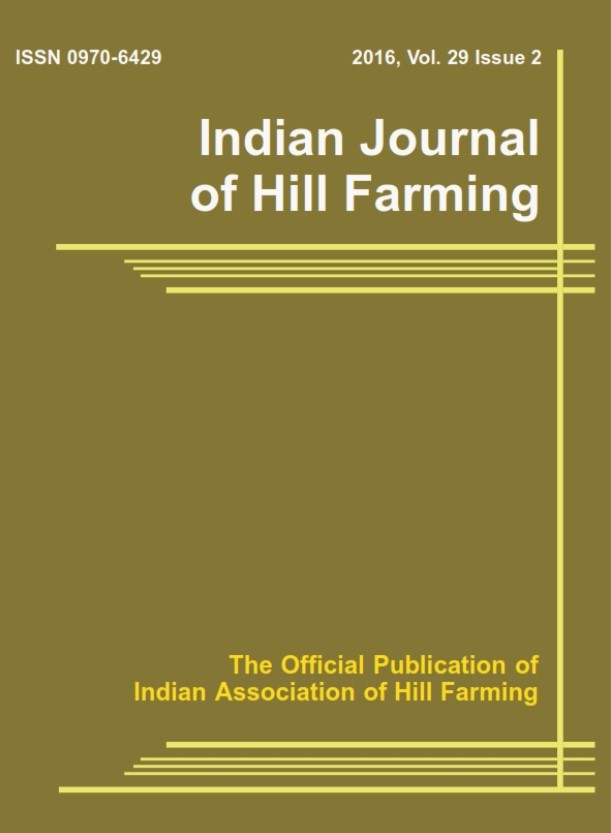Response of different varieties of mungbean (Vigna radiata L.) to zinc, boron and their combined application under Tripura condition
DOI:
https://doi.org/10.56678/Keywords:
Mungbean, Varieties, Zinc, Boron, Growth, YieldAbstract
A field experiment was carried out in the experimental farm of College of Agriculture, Tripura to study response of different varieties of Mungbean (Vigna radiata L.) to zinc, boron and their combined application, during summer season of 2022. The experiment was laid out in split plot design with three replications. In main plot there were six varieties (V1 :MEHA-IPM-99-125, V2 :Samrat, V3 : Bireswar, V4 :Virat, V5 :TMB – 37,V6 : TM-2000-2) and four micronutrients (M0 :Control, M1 :Zinc0.1%, M2 :Boron- 0.2%,M3 : Zinc- 0.1% + Boron- 0.2%) in subplots. Plot size was 6 m2 (3m×2m) and spacing was 30 cm × 15 cm. Recommended fertilizers (20- 40- 40 Kg, N, P2O5 , K2O ha-1 ) were applied as basal. Zinc @ 0.1 %, Boron @ 0.2 % and combined solution (Zinc @ 0.1 % + Boron @ 0.2 %) were applied at 30 DAS on selected plots as per field lay out. The results of the experiment showed that different varieties of mungbean crop significantly responded to micronutrients Zn and B as well as their combined application. The crop growth attributes such as number of branches per plant, nodules per plant, plant dry matter accumulation, Crop Growth Rate were all significantly influenced by different varieties and micronutrient application. Application of Zinc- 0.1% + Boron- 0.2% (M3 ) with variety Virat (V4 ) recorded the maximum seed yield as well as stover yield and harvest index. Virat (V4 ) variety performed best among all six varieties in respect of yield attributes and yield..Downloads
Published
2023-03-31
Issue
Section
Articles
License
Copyright (c) 2024 A. Nandi, A Saha, S. Gunri, D. Saha, B. De. (Author)

This work is licensed under a Creative Commons Attribution-NonCommercial-NoDerivatives 4.0 International License.
How to Cite
Response of different varieties of mungbean (Vigna radiata L.) to zinc, boron and their
combined application under Tripura condition. (2023). Indian Journal of Hill Farming, 37(01), 93-99. https://doi.org/10.56678/




